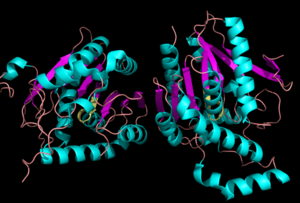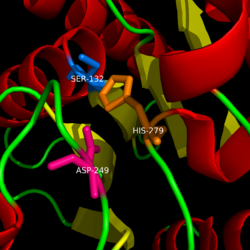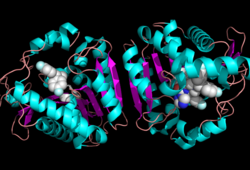Sandbox reserved 916
From Proteopedia
(Difference between revisions)
| Line 11: | Line 11: | ||
MGL degrades 2-arachidonoyl glycerol (2-AG). 2-AG is commonly classified as an endocannabinoid. In the brain endocannabinoids are released from postsynaptic neurons, causing the retrograde suppression of synaptic transmission (Taschler et al. 2011). | MGL degrades 2-arachidonoyl glycerol (2-AG). 2-AG is commonly classified as an endocannabinoid. In the brain endocannabinoids are released from postsynaptic neurons, causing the retrograde suppression of synaptic transmission (Taschler et al. 2011). | ||
In Peripheral tissues, EC is active in autonomic nervous system. EC affects processes such as learning, motor control, cognition, and pain (Taschler et al. 2011). EC is also able to regulate lipid metabolism and food intake (Taschler et al. 2011). | In Peripheral tissues, EC is active in autonomic nervous system. EC affects processes such as learning, motor control, cognition, and pain (Taschler et al. 2011). EC is also able to regulate lipid metabolism and food intake (Taschler et al. 2011). | ||
| - | + | Taschler et al. looked at the role of MGL in energy metabolism, finding that MGL deficiency in animals led to the buildup of 2-AG (Taschler et al. 2011). | |
| - | ==Structure== | + | ==Structure== |
| + | MGL has eight-stranded β-sheet protein fold with seven parallel and one antiparallel strands (Bertrand et al. 2010). | ||
== Catalytic triad == | == Catalytic triad == | ||
Revision as of 12:17, 25 March 2014
Monoglyceride Lipase (MGL)
| |||||||||||



